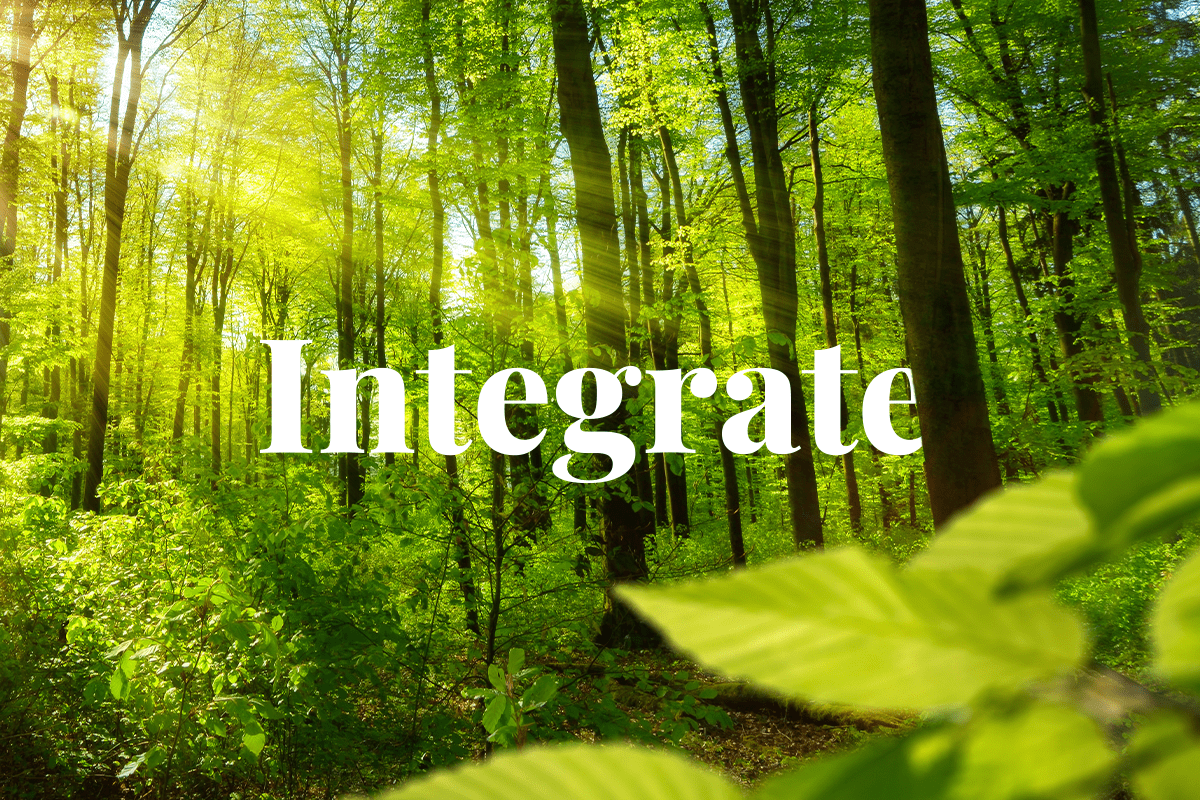A circular economy aims to keep resources in use for as long as possible, minimising waste and maximising resource efficiency. Trees are a key resource that can be integrated into circular economy practices in many ways. In this article, we will explore how trees can be integrated into circular economy practices and the benefits that this can bring.

The benefits of trees
Before diving into how trees can be integrated into a circular economy, it's important to understand the benefits trees offer. Trees provide a wide range of ecosystem services, including:
- Carbon sequestration: Trees absorb carbon dioxide from the atmosphere.
- Biodiversity: Trees provide habitats for a wide range of wildlife, supporting biodiversity.
- Soil health: Trees help prevent erosion and improve soil health by providing organic matter, stabilising soil, and increasing soil water retention.
- Air quality: Trees absorb pollutants from the air, improving air quality.
Keeping these benefits in mind, let's explore how trees can be integrated into circular economy practices.
 A wasp building a nest on a tree.
A wasp building a nest on a tree.
Read more: The benefits of trees in agroforestry
Sustainable forestry
The first way in which trees can be integrated into a circular economy is through sustainable forestry practices. This means harvesting trees in a way that ensures the long-term health of the forest ecosystem. Sustainable forestry practices include:
- Selective harvesting: Harvesting only mature trees, leaving younger trees to continue growing.
- Replanting: Planting new trees to replace those that have been harvested.
- Regeneration: Allowing natural regeneration of the forest rather than planting new trees.
By using sustainable forestry practices, we can ensure that forests continue to provide ecosystem services while also providing a valuable resource for the circular economy.
Read more: What is sustainable land management?
Timber products
While trees have traditionally been used to produce a wide range of products, including timber for construction, furniture, and paper products, logging for timber has always stood the risk of misuse and overlogging. There lies the importance of opting for sustainably-sourced timber.
Integrating timber products into circular economy practices means adhering to the principles of reduce, reuse, recycle. For instance, by designing products for disassembly and reuse, we can extend the lifespan of these products and minimise waste. Similarly, we can incorporate recycled paper into new products and reduce our reliance on new materials.
By adopting these circular economy practices, we ensure the carbon stored in trees is sequestered for longer, and at the same time, we maximise the value of these products.
Biomass energy
Another way in which trees can be integrated into a circular economy is through using biomass energy. This involves using wood chips, pellets, or logs to generate heat or electricity. Biomass energy has a number of benefits, including:
- Local production: Biomass energy can be produced locally, reducing dependence on imported energy sources.
- Waste reduction: Using biomass energy can help reduce waste by using wood that would otherwise be left to rot or burned in the open air.
- Renewable energy: Biomass energy reduces our dependence on fossil fuels by providing alternative, more renewable sources of energy.
By using biomass energy, we can reduce our reliance on fossil fuels and ensure that local resources are put to use.
 Biomass
Biomass
Bioproducts
Finally, trees can be integrated into a circular economy by producing bioproducts. Bioproducts are materials made from renewable resources, such as trees, and are used to replace traditional petroleum-based products. Bioproducts made from trees include:
- Bioplastics: Plastics made from renewable resources, such as wood chips or sawdust.
- Biofuels: Fuels made from renewable resources, such as wood chips or sawdust.
- Biocomposites: Composites are made from renewable resources, such as wood fibres or cellulose.
By using bioproducts, we can reduce our dependence on non-renewable resources and minimise our environmental impact while creating new markets for sustainable products.
Challenges and opportunities
While there are many benefits to integrating trees into circular economy practices, some challenges also need to be addressed. These include:
- Deforestation: The conversion of forests to other land uses, such as agriculture or urban development, is a major threat to the world's forests. This can be addressed through policies and incentives that promote sustainable forestry practices and discourage deforestation.
- Unsustainable harvesting: Unsustainable harvesting practices can lead to the depletion of forest resources and the loss of ecosystem services. This can be addressed through certification schemes, such as the Forest Stewardship Council, that promote sustainable forestry practices.
- Resource competition: As demand for biomass energy and bioproducts increases, there is a risk that trees will be harvested at an unsustainable rate. This can be addressed through policies that promote using waste wood and other low-value wood sources for biomass energy and bioproducts rather than harvesting high-value trees.
Despite these challenges, integrating trees into circular economy practices presents a significant opportunity to create a more sustainable and resilient economy. By maximising the use of resources and minimising waste, we can ensure that we are using our natural resources in a way that benefits both people and the planet.
Take action today—plant a tree with DGB
Trees—the core of DGB Group’s mission
Trees provide a multitude of benefits, from cleaning the air we breathe to providing habitats for wildlife. By integrating trees into circular economy practices, we can maximise their use while ensuring they continue to provide these vital ecosystem services. At DGB Group, we believe trees are an essential part of a circular economy, and we are committed to continuing our work in restoring and protecting forests for future generations.
It is our collective responsibility to take measures to safeguard and conserve our tree populations and their natural habitats. Such measures may entail endorsing reforestation initiatives, conserving riparian areas, advocating for green spaces in urban regions, and implementing sustainable land management approaches prioritising tree conservation.
You can start making a change today—plant a tree with DGB



